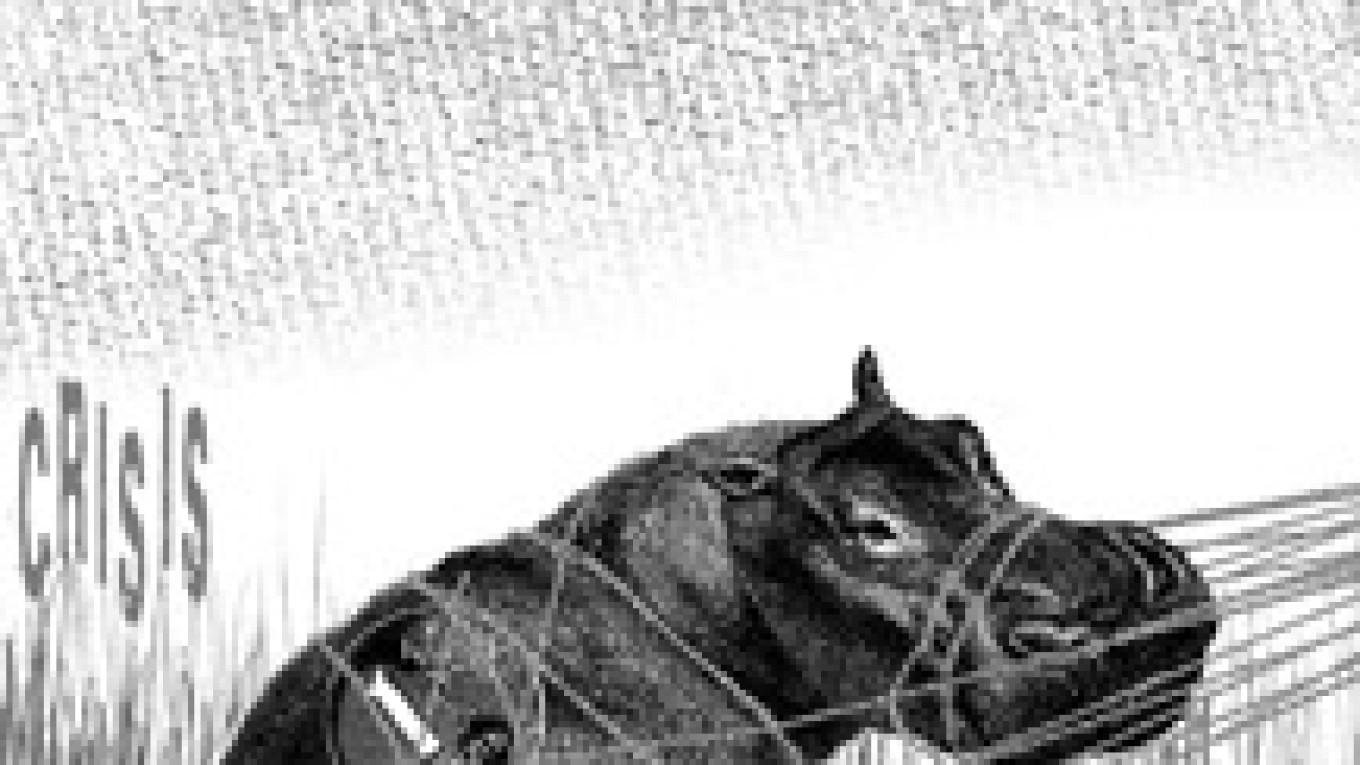It has become fashionable lately to discuss the impending “second wave” of the financial crisis and the next round of sharp ruble devaluations. Paradoxically, the more evidence we see that the world is gradually emerging from the crisis — there is a good chance the United States and leading European countries will show positive growth in the third quarter — the gloomier Russia’s financial analysts become.
There is a good reason for this. Despite a 70 percent growth on the Russian stock markets and a 10 percent strengthening of the ruble against the basket of currencies since late January, there has been no substantial change to the fundamentals in the country’s economy. In the second quarter, manufacturing continued its decline and real incomes fell. (Although the official level of unemployment appeared to stop growing, this was due more to creative reporting of employment figures than to any real decrease in unemployment.)
Despite these negative fundamentals, the ruble looks rather strong now, and any speculation about a new devaluation is somewhat premature. Before examining those arguments, it is important to look at the devaluation that occurred last winter and determine if it was primarily a positive or negative event.
The ruble nosedived from 23.1 rubles per dollar to 36 rubles per dollar — the largest drop of the last five years — before eventually stabilizing at 33 rubles per dollar. Thus, the ruble devaluation totaled 31 percent between October and February, but only 26 percent overall between October and today.
Is that a lot or a little? Considering that the dollar made significant gains against leading currencies between late 2008 and early 2009, gaining 21.7 percent against the euro and 32.8 percent against the British pound, the ruble’s correction does not look so unexpected, nor does its rallying this spring and summer.
| | |
|
To Our Readers | |
|
The Moscow Times welcomes letters to the editor. Letters for publication should be signed and bear the signatory's address and telephone number.
| |
| | |
At the same time as the ruble bottomed out, the national currencies of all other developing countries except China’s also fell. Between November and February, the Indian rupee dropped 15.8 percent, the Polish zloty decreased by 23.6 percent and the Brazilian real fell by 24.7 percent. This indicates that the ruble’s drop was in line with the performance of currencies in similar countries.
What’s more, the gradual weakening of the ruble enabled banks to generate significant income from currency speculation and gave Russians a chance to switch their holdings from rubles to dollars. The almost $200 billion in reserve funds that the state spent to conduct its “managed devaluation” contributed to the overall economy and supported the financial system during the first phase of the crisis. Although I sharply criticized the authorities’ actions last winter, in hindsight I must admit that their policies produced favorable results.
If the authorities were to repeat the same level of devaluation that was carried out in 2008 and 2009, they would not be able to accomplish one of the most important goals of weakening the ruble — to stimulate the economy by giving a boost to domestic manufacturers. Any significant growth from import substitution is possible only if the exchange rate were to fall to 50 to 55 rubles per dollar — and even this may be a stretch, considering the dire straits that Russia’s manufacturing sector is in now.
It is important to note that even while the ruble fell, the price of imported goods rose proportionately less than did the price of domestic goods, dampening the benefit for the country’s producers. This is in sharp contrast to the ruble devaluation after the 1998 default, which led to a prolonged period of growth starting in 1999.
Since further devaluation would have a negative impact on the economy, the authorities will try to prevent the ruble from dropping significantly. The cost of summer 2010 futures for the Russian ruble currently stands at 34.4 rubles to 34.5 rubles per dollar, indicating expectations of only a very moderate devaluation.
It is clear that the worst of the crisis is behind us, although its underlying causes still remain. At the same time, it is also clear that the U.S. Federal Reserve and the central banks of other leading economies will not make significant changes to their monetary policies in the near future. The prices for Russia’s leading exports are also unlikely to suffer a major decline. I am fairly certain that the prices of gas, oil and metals will remain at current levels through mid-2010, although some volatility in those markets will remain. Thus, it is unlikely that the Central Bank will make any drastic decisions that would affect the currency markets.
There are, however, two factors that could alter my forecast: a second-wave crisis in the banking system or a drop in oil prices to below $40 per barrel. But the pressure against the dollar brought by the Finance Ministry, which has sold and will continue to sell a substantial amount of hard currency from the reserve fund to cover current budget deficits, will help keep the dollar low.
In the end, I do not anticipate a major drop in the ruble in the next six to 12 months. The ruble might even gain strength if the dollar slumps on the world currency market and if the euro returns to its former record highs as the world’s leading economies emerge from the recession. By year-end, I see a ratio of $1.50 to $1.56 per euro and 32 rubles to 32.5 rubles per dollar.
For now, there is no reason to believe the doomsayers who are predicting another sharp ruble devaluation.
Vladislav Inozemtsev, the director of the Centre for Post-Industrial Research, is the publisher and editor-in-chief of Svobodnaya Mysl magazine.


